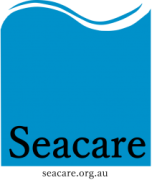SeaCare Inc
Type of resources
Topics
Keywords
Contact for the resource
Provided by
Years
-

An aerial survey was conducted for giant kelp (Macrocystis pyrifera) on the east coast of Tasmania from Eddystone Point to Southeast Cape. This survey represents part of a series of similar surveys, with historic aerial surveys having been conducted in 1986 and 1999. The survey was conducted via light aircraft. Areas of visable Macrocystis pyrifera beds were marked on topographical land tenure maps using landmarks as references, and complimentary photo footage was collected.
-

This record describes an aggregated data product compiled from a number of different surveys of Macrocystis surface cover in Tasmanian waters, spanning 1950 to 2019. Some surveys represent a statewide census of Macrocystis cover, while others are targeted surveys of smaller regions. Methodology and data quality may also vary between surveys. Please see linked metadata records for specific methodologies and quality statements applying to individual surveys.
-

Surveys were conducted as part of an assessment of the Macrocystis pyrifera (Linnaeus) C. Agardh 1820 beds on the east coast of Tasmania by the Commonwealth Scientific and Industry Research Organization (CSIRO) Division of Fisheries seaweed program in the early 1950's. Surveys were conducted because of interest in the Macrocystis beds as a source of alginates. Surveys were done between 1950 and mid 1953. The paper was published in 1954.
-

A research program jointly conducted by Alginates (Australia) P/L and C.S.I.R.O. Division of Fisheries and Oceanography was set up to investigate the relationship between kelp: Macrocystis pyrifera (Linnaeus) C. Agardh 1820 and crayfish larvae. Alginates (Australia) P/L, based at Louisville in the Mercury Passage, were harvesting kelp at this time. This study was initiated to address concerns regarding the effect of harvesting on crayfish stocks. The survey results are taken from an unpublished interim report presenting the results of the work at that stage (1965). Apparently an aerial survey was used to determine stock distributions although this is not specified in the report.
-

As a condition of licence for harvesting Macrocystis pyrifera (Linnaeus) C. Agardh 1820, Alginates (Australia) P/L lodged harvest returns to the Tasmanian Lands Department. The harvest returns consisted of what tonnage was harvested from where, when and the length of trip. While Alginates (Australia) P/L harvested from 1964-1973, harvest data for individual sites is only available for the years 1970-71. Here the data is summed for individual sites for the two years 1970-71.
-

A survey of the east Tasmanian coastline from Musselroe Bay to South East Cape revealed a total of 10 km2 of Macrocystis pyrifera (Linnaeus) C. Agardh 1820 kelp forest. Average harvestable quantities based on Alginates (Australia) Company records (1965-72) show that cropping can expect to yield 5 ton/acre or 1.23 kg/m2. This realizes a total of 12,300 tonne available on the East Coast of Tasmania in 1986. Review of past records show fluctuations in total amounts harvested, due possibly to factors such as high oceanic water temperatures with subsequent low nutrient concentrations and storm damage. The survey was conducted from a light aeroplane. Areas of Macrocystis pyrifera beds were marked on 1:100,000 topographical land tenure maps using landmarks as references. Digitising of bed outlines on maps was done using Mapinfo. Weight of Macrocystis per unit area is also estimated from quadrats harvested at a number of sites along the coast.
-

An aerial survey of giant kelp (Macrocystis pyrifera), was carried out on the east coast of Tasmania from Musselroe Bay to Southeast Cape. This survey represents part of a series of similar surveys, with historic aerial surveys having been conducted in 1986, 1999 and 2009. This survey was conducted via light aircraft in Nov-Dec 2019, and recorded areas of visible surface canopy cover of giant kelp. Canopy areas were scribed in-flight onto 1:50,000 topographic maps (TASMAP 2017), and complimentary photo and video footage was collected. Canopy areas were digitised with reference to photo, video and map data within QGIS 3.4, and boundaries were checked against Seamap Australia seafloor habitats (Lucieer et al. 2017) and bathymetric data (Smith 2016). Each bed was attributed a broad and fine scale location, density and reliability estimate (see attached report for details). This survey was completed with funding from Pennicott Wilderness Journeys, Tassal and IMAS, and equal in-kind support by Marine Solutions and Seacare Inc.
-

A survey was conducted for Macrocystis pyrifera (Linnaeus) C. Agardh 1820 from Eddystone Point to South East Cape The survey was conducted from light aeroplane. Areas of Macrocystis pyrifera beds were marked on 1:100,000 topographical land tenure maps using landmarks as references. A Trimble GPS unit was used to track position in the aeroplane. As boundaries of the beds were flown over, these were marked on the GPS. When plotted up, these information assisted in determining Macrocystis bed boundaries where these were not close to the coast.
-

The results of this survey are based primarily on the first hand experience of Craig Sanderson who was doing his masters thesis at the time on aspects of the biology of Macrocystis pyrifera (Linnaeus) C. Agardh 1820. In need of significant beds of M. pyrifera for research much of the east coast was searched by boat. Significant stands (>1/2 acre) were found at Darlington, Southerly Bottom (East North Bay), Fortesque Bay and George III Rock, (near Actaeon Island). The status of the few areas not visited was determined from anecdotal reports.
 TemperateReefBase Geonetwork Catalogue
TemperateReefBase Geonetwork Catalogue